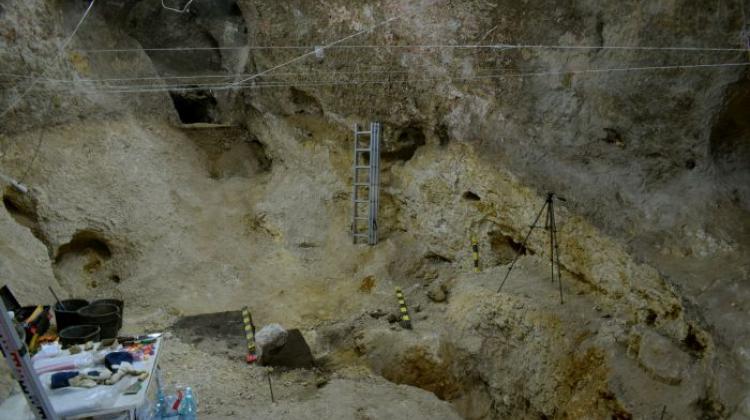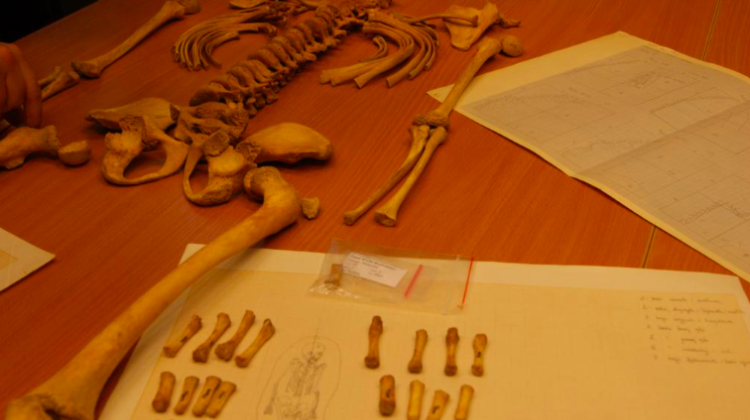New archaeological finds in Cave Raj
The bones of a cave lion, a mammoth and reindeer antlers have been discovered by archaeologists working in Cave Raj (Świętokrzyskie). The aim of the research project is the analysis and detailed reconstruction of climatic and environmental changes that occurred in prehistory in southern Poland.
'Cave Raj is one of the most famous and important archaeological sites in Poland, but we actually know very little about it,’ says Dr. Małgorzata Kot from the Faculty of Archaeology at the University of Warsaw, who is supervising the current work. The archaeologist points out that research in this place was carried out only in the 1960s, just after the discovery of the cave.
'What was found back then was a huge amount of animal bones and traces of at least two visits of Neanderthals to this place. Since then, nothing more has happened in terms of research. However, over 60 years laboratory methods have advanced so much that we will be able to say much more about the finds and the history of this place,’ she adds.
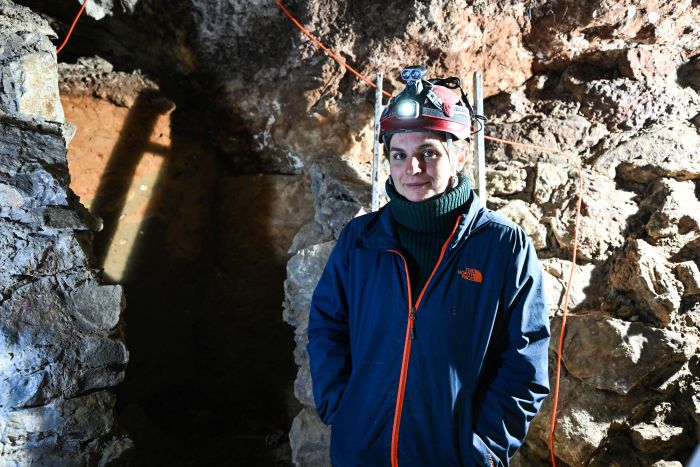
Research is currently being carried out at the entrance to the cave, the excavations cover only about half a square meter, but have already yielded a number of interesting finds. Over a few days of research, archaeologists found the bones of a cave bear and cave lion, mammoth, and fragments of reindeer antlers. In total, there are about 200 large and well-preserved bones. But scientists expect that there may be thousands of tiny artefacts in deeper soil layers, including bone fragments of small mammals.
'We are already able to say that not only Neanderthals, but also modern humans lived in Cave Raj. This has not been recorded before,’ Dr. Kot says.
Subsequent soil layers from the site are being collected, sorted and cleaned in the laboratories of the European Centre for Geological Education, a scientific and research centre at the University of Warsaw’s Faculty of Geology, which is located in Korzecko in the Chęciny commune.
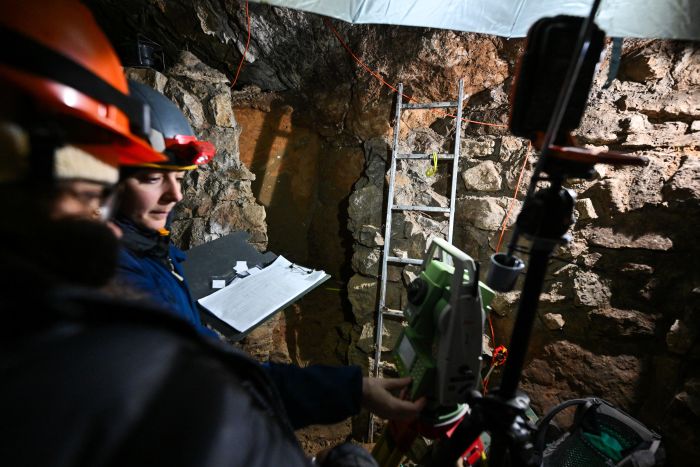
The researchers also want to verify the hypothesis regarding reindeer antlers, which were found in large numbers in the cave during research in the 1960s. 'According to the hypothesis, Neanderthals used the collected antlers to build barricades and protect cave entrances. We will try to verify whether this was possible, and whether it actually concerns the period in which Neanderthals lived,’ Kot says.
Archaeologists will return to Cave Raj in June and July, when a larger-scale project is planned.
The research is financed with a grant from the National Science Centre. The project aims to reconstruct in detail the climatic and environmental changes that occurred in the prehistory of Southern Poland, and compare them to settlement strategies from the Late Middle Palaeolithic to the Upper Palaeolithic, between approximately 60,000 and 14,500 years ago.
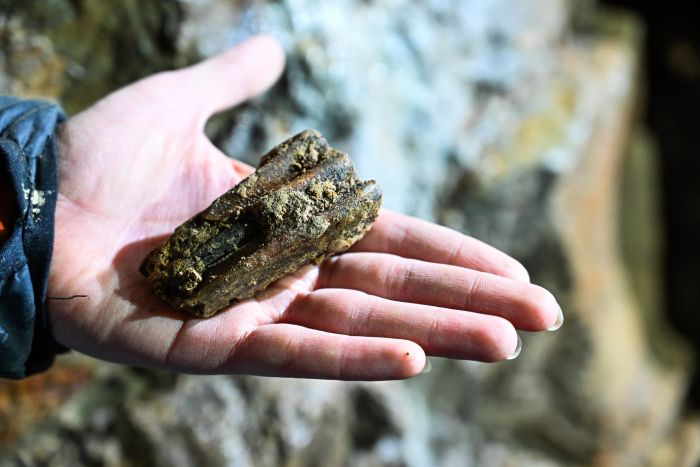
As part of the project, the researchers intend to analyse fossil material from several caves in southern Poland. In addition to Cave Raj, it also includes Cave Deszczowa in the Kraków-Częstochowa Upland and Cave Obłazowa in the Western Carpathians.
Cave Raj was formed in limestone rocks that formed at the bottom of a shallow sea about 360 million years ago. It was discovered by students from the Kraków geological technical high school in 1964, during field exercises in the Świętokrzyskie Mountains. It is distinguished by an exceptionally rich, diverse and well-preserved dripstone with over 47,000 stalactites. The tallest dripstone column is almost two meters high. The cave has been open to the public since 1972. (PAP)
PAP - Science in Poland, Wiktor Dziarmaga
wdz/ aszw/ kap/
tr. RL
Przed dodaniem komentarza prosimy o zapoznanie z Regulaminem forum serwisu Nauka w Polsce.





